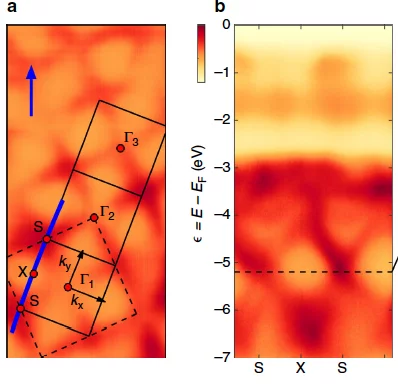For decades, the mechanism of Mott phase in Ca2RuO4 has puzzled researchers. This material is a paradigmatic case of multi-band Mott physics including spin-orbit and Hund's coupling. Several theoretical proposals have been put forward, however progress has been impeded by the lack of knowledge about the low-energy electronic structure. With our recent contribution, we provided -- using angle-resolved photoemission electron spectroscopy -- the band structure of the paramagnetic insulating phase of Ca2RuO4 and show how it features several distinct energy scales. Comparison to a simple analysis of atomic multiplets provides a quantitative estimate of the Hund's coupling J=0.4 eV. Furthermore, the experimental spectra are in good agreement with electronic structure calculations performed with Dynamical Mean-Field Theory. The crystal field stabilisation of the dxy orbital due to c-axis contraction is shown to be important in explaining the nature of the insulating state. It is thus a combination of multiband physics, Coulomb interaction and Hund's coupling that generates the Mott insulating state of Ca2RuO4. These results underscore the importance of Hund's coupling in the ruthenates. Our findings suggest an orbital differentiated picture where the dxy orbitals are band insulating whereas the resulting half-filled dxz/yz band undergoes a conventional Mott transition.
Contact
Denys SutterUniversity of Zürich
Telephone: +41 44 635 5775
E-mail: dsutter@physik.uzh.ch
Prof. Johan Chang
University of Zürich
Telephone: +41 44 635 5748
E-mail: johan.chang@physik.uzh.ch
Original Publication
Hallmarks of Hunds coupling in the Mott insulator Ca2RuO4Denys Sutter, Claudia G. Fatuzzo, Simon Moser, Minjae Kim, Rosalba Fittipaldi, Antonio Vecchione, Veronica Granata, Yasmine Sassa, Fabio Cossalter, Gianmarco Gatti, Marco Grioni, Henrik M. Rønnow, Nicholas C. Plumb, Christian E. Matt, Ming Shi, Moritz Hoesch, Timur K. Kim, Tay-Rong Chang, Horng-Tay Jeng, Chris Jozwiak, Aaron Bostwick, Eli Rotenberg, Antoine Georges, Titus Neupert, Johan Chang
Nature Communications 8, 15176 (2017)
DOI: 10.1038/ncomms15176
